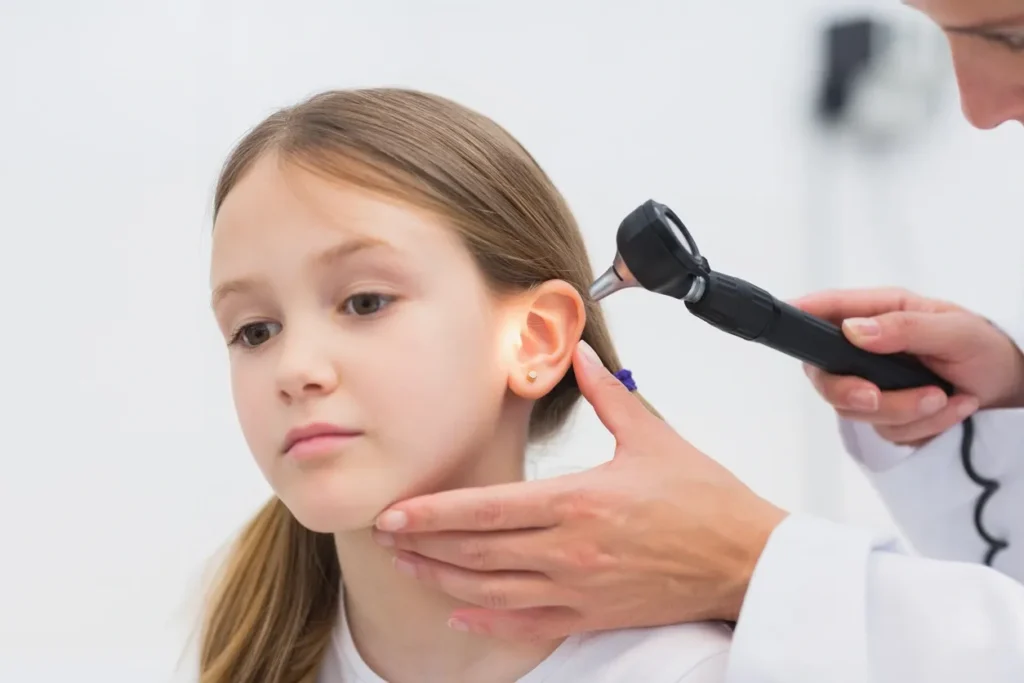Clinical Practice Guideline: Otitis Media w/ Effusion (Glue Ear)

Series 3. Read series 2 here
Speech and Language
There are a number of observational studies regarding the impact of mild, fluctuating and unilateral hearing loss. These grade C studies support the importance of raising awareness for caregivers around how hearing in Glue Ear can affect speech development as well as its impact on

the development of the auditory system. Book ear infection treatment London.
Surveillance of Chronic Glue Ear
To be able to quickly identify any disease that has been caused by the ongoing Glue ear, it is recommended that patients should return for re-evaluation every 3-6 months until the effusion is resolved, significant hearing loss is confirmed by the caregiver or when genetic hearing losses have been ruled out.
Additionally, the otoscopy, tympanometry and hearing test results may support
the need for grommets (a tube surgically implanted in the eardrum to drain fluid from the middle ear).
Surgery for Children Under Four or Over Four
Where Glue Ear and chronic adenoid infections or obstruction is present in a child under four, the grommet surgery should not include removal of the adenoids. The evidence is not strong enough to support adenoidectomy in under fours where there is such a high-risk of a reaction to anaesthesia, or an incident involving velopharyngeal movement. Children older than four when having grommet surgery should be considered for adenoidectomy by default. Randomised controlled trials rated at Grade B support this guideline. Those with cleft palate or other first and second branchial arch developmental problems are unlikely to be considered for adenoidectomy but will be considered for grommets.
Outcome Assessment
The aim of the intervention is to improve hearing or to have the glue ear resolved. This should be documented in the medical records that belong to the child. The clinician can also implement patient-centred outcomes such as ‘improved behaviour at school’ as a more meaningful way of tracking progress.
